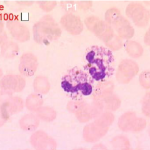Mental health articles
OF mental health care and mentally ill
Anorexia nervosa medical definition and diagnosis
Anorexia nervosa
First identified in the late nineteenth century, anorexia nervosa involves behaviours intended to keep the individual as thin as possible. Indeed, the defining characteristic of anorexia is being signifi cantly underweight. DSM-IV-TR suggested a weight-based cut-off point for a diagnosis of anorexia as being 15 per cent below the normal weight for age and height. Weight loss and control are generally achieved using one of two methods: the classic, type 1, pattern of self-imposed starvation, and the type 2 pattern of binging and purging through vomiting or the use of laxatives. Where anorexia is discussed in this chapter it usually refers to the first of these two types. The DSM-IV-TR criteria for a diagnosis of anorexia are:
a refusal to maintain body weight above a minimally normal weight for age and height intense fear of gaining weight, even though underweight disturbed body perception, undue influence of weight or shape on self-evaluation, or the denial of the seriousness of current low weight cessation of menstruation if this has already begun.
Between 80 and 90 per cent of those who develop anorexia nervosa are female, with the typical age of onset being between 14 and 18 years old. Across the world, between 0.5 and 2 per cent of women are likely to develop anorexia in their lifetime. For most people with anorexia, weight control is a long-term issue. Loewe et al., for example, found that 21 years after their initial admission, just over half of a cohort of women identified as anorexic were ‘fully recovered’, 21 per cent were ‘partially recovered’ and 10 per cent still met the full diagnostic criteria for anorexia. Few had sought help or any form of treatment, and 16 per cent had died of causes related to anorexia. Many people with anorexia go on to develop eating habits typical of bulimia nervosa: that is, maintenance of normal weight while still having abnormal eating and vomiting patterns, leading some to argue that both conditions share significant common elements. This is discussed later in the chapter. In contrast to many mental health disorders, the prevalence of anorexia is highest among women in the higher socio-economic groups, and among those who achieve high academic achievement. People with anorexia tend to score low on measures of assertiveness and self-esteem, and high in self-directed hostility. They also typically measure highly on measures of perfectionism. Despite their avoidance of eating, most people with anorexia are preoccupied with thoughts of food. They may spend much of their time thinking about food, preparing it for themselves or others, or watching others eat. They may report dreaming about food, experience hunger pains and retain an appetite for food. High levels of exercise or other behaviours that consume calories are common weight-loss strategies. Most, but not all, people with anorexia have a distorted body image, considerably overestimating their body proportions, and have a low opinion of their body shape. Psychological problems, including mild depression, obsessive-compulsive disorder and anxiety, are common among people with anorexia. The control and reduction in weight associated with anorexia can result in a number of health consequences. The most immediate is the absence of menstruation (or amenorrhoea). Less obvious problems include anaemia, increased tooth cavities and gum infections, high blood pressure, reduced bone mineral density, low blood pressure, rough and cracked skin, and dry and brittle hair. Health problems may move to crisis in the form of metabolic and electrolyte imbalances that can be life-threatening. Across studies, between zero and 21 per cent of people with anorexia die as a consequence of their problems, with the most common causes of death being starvation and suicide. The brain may also show evidence of changes at times of severe starvation, with reductions in brain volume and increases in the amount of cerebrospinal fl uid. Thankfully, Wagner et al. found these changes to be reversible in people recovered for over one year.
Post Footer automatically generated by wp-posturl plugin for wordpress.
More from my site
Tags: anorexia nervosa, definition, diagnosis, medical







Leave a Reply